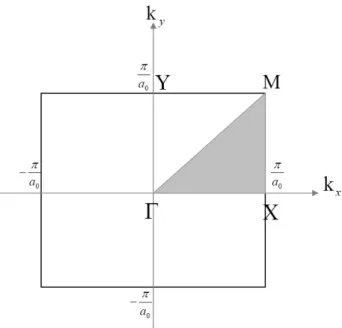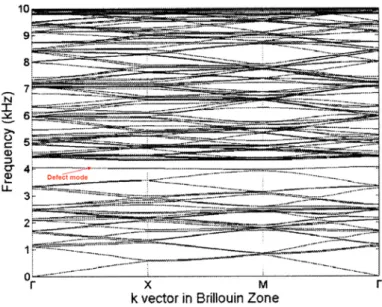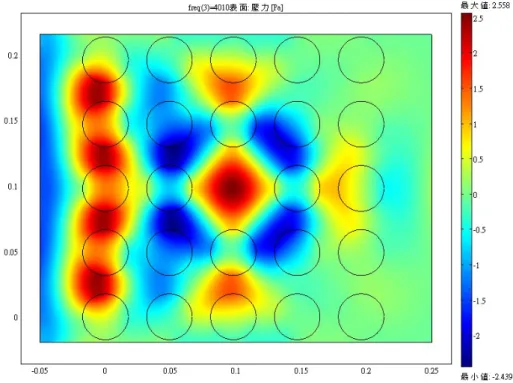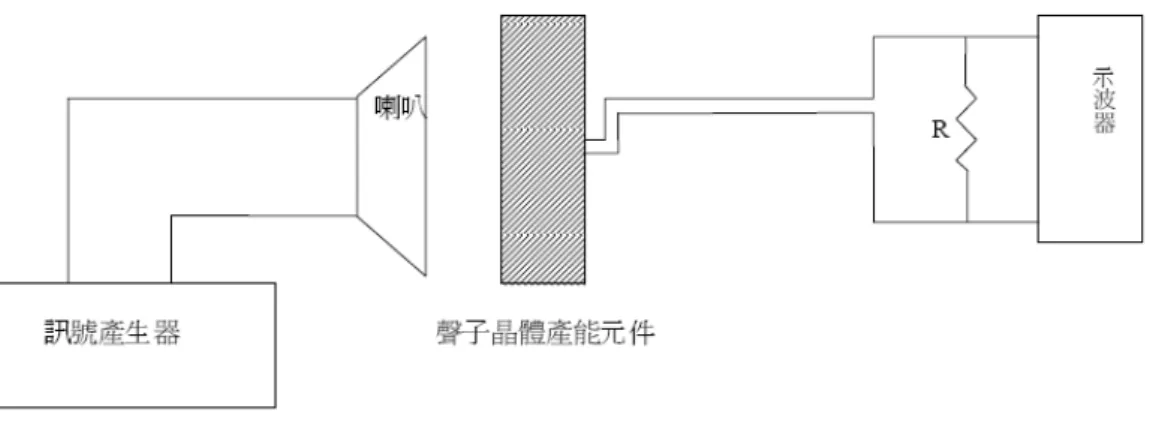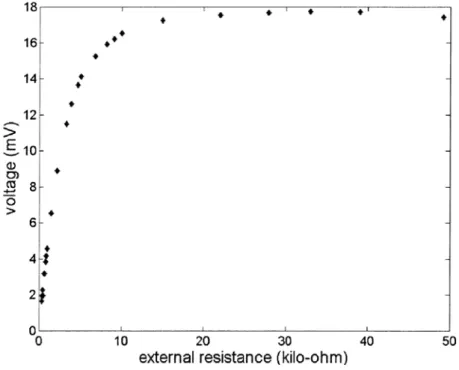Journal of Engineering Technology and Education, ISSN 1813-3851
Application and analysis of phononic crystal energy harvesting devices
Jia-Yi Yeh
Department of Information Management, Chung Hwa University of Medical Technology. E-mail : yeh@mail.hwai.edu.tw
Abstract
In this study, characteristics of the wave propagations of the selective phononic crystals will be studied and applied to design a new type of devices according to the characteristics of the band gaps of the phononic crystals and combining the PZT material to design the novel energy harvesting devices of the phononic crystal with PZT material. Additionally, the defect mode (for example: cavity) of the phononic crystal are used to analyze and design the high efficient energy harvesting devices. Then, we can design some new types of energy harvesting devices and more convenient applications on the acoustic and vibrational wave and it can be applied to investigate other types of energy harvesting devices in future studied according to the results. This novel application about the phononic crystals and energy harvesting devices is helpful to the environmental energy development.
Keywords: phononic crystal; PZT; energy harvesting; defect; cavity.
1. Introduction
Elastic and acoustic wave propagation in periodic composite materials has been extensively studied in recent years. Phononic crystals (PCs) named acoustic/sonic band gap media are the elastic analogues of photonic crystals and have also received renewed attention recently [1, 2]. The propagation of an acoustic wave through one-dimensional PCs and calculated the transmission coefficients of various finite structures was presented by James et al. [3]. Then, Kushwaha et al. [4] studied the PBGs theoretically and Montero et al. [5] calculated experimentally by in composite systems constituted by periodic inclusions of a given material in a host matrix.
Recently, the investigations about energy harvesting devices was obtained and calculated based on the PZT cantilever beam structures. Sodano et al. [6] presented a review of power harvesting from vibration using piezoelectric materials. And, Anton and Sodano [7] also studied the A review of power harvesting using piezoelectric materials (2003-2006). Then, the analysis of the transformation of mechanical impact energy to electric energy using piezoelectric vibrator was investigated by Umeda et al. [8]. Guigon et al. [9] studied the energy harvesting effects of the piezoelectric membrane which was vibrated by the rain. And, he also compared the difference between the numerical and experimental results. The piezoelectric multi-frequency energy converter for power harvesting in autonimous microsystems was obtained by Ferrari et al. [10]. The effects of multi-frequency energy harvesting devices were calculated and analyzed in this study. Besides, Lu et al. [11] presented the modeling and analysis of micro piezoelectric power generators for micro-electromechanical-systems applications. And, Lin et al. [12] calculated the modeling and simulation of piezoelectric MEMS energy harvesting device. The experimental validation of a distributed parameter piezoelectric bimorph cantilever energy harvester was obtained and discussed by Rafique and Bonello [13].
The properties of the PCs are studied first and the defect bands, band structures are also determined in this study. Then, the calculation is based on the plane wave expansion method and the defect mode is obtained by
supercell calculation. A defect is introduced by removing one cylinder from the middle of the PCs and the point defect can act as the resonant cavity and by using commercial software, COMSOL Multiphysics [14], the pressure in the cavity was calculated in this study. This work investigates the energy harvesting effects of the phononic crystal with a cavity of two-dimensional PCs which are composed of PMMA cylinders with square arrays embedded in air background
2. Numerical and Calculation Model
In this study, the band structure of the two-dimensional periodic PCs with point defect is calculated and presented first. The justification is that this seems to be the only case in which the wave equation for inhomogeneous solids greatly simplifies. Then, the wave equation of the PCs is known to be the following equation: ) ( ) ( 2 1 2 1 11 P P=∇⋅ ∇ ∂ ∂ − − ρ t C , (1)
where, ρ is the mass density, C11=ρcl2 is the longitudinal elastic constant,
c
l is the longitudinal speed ofacoustic wave, P is the pressure, and ∇ is the two-dimensional nabla, respectively. Then, the quantities ρ−1(r) and C111(r)
−
can be expanded in the two-dimensional Fourier series as the following equations by making use of the periodicity of the PCs system:
∑
⋅ − = G r iG e r) ( ) ( 1 G ρ ρ ,∑
⋅ − = G r iG e r C111( ) τ(G) , (2a, b)where, G is the two-dimensional reciprocal-lattice vector.
The supercell with 5×5 circular cylinders (material A, PMMA) embedded in a background medium (material B, air) as shown in Figure 1. And, introduces a defect by removing a central cylinder, to form two dimensional lattices with lattice spacing
a
0. The corresponding densities of the system are ρ and A ρ , respectively. BThen, the Fourier coefficient can be written as follows [15]:
=
)
(G
ρ
[( ) ] ≠ ∆ ≡ − × − = ≡ − − + − ⋅ − = × ⋅ − − =∑
∑
. 0 ), ( ) ( ) ( ) ( ) ( 0 , ) ) 1 N ( 1 ( ) 1 N ( ) 0 , 0 ( N N m , N N 2 2 2 0 2 1 1 G G F e e G F G f f iG a m m iG m b a b a ρ ρ ρ ρ ρ ρ , (3) where 2 0 2 2 0 a N rf =π is the filling fraction of one cylinder in the supercell and F(G) is the structure factor. An equation analogous to Eq.(3) can be written for τ(G) in terms of 111
−
C . For the cylinder with radius
r
0 in0 0 1( ) 2 ) ( r r J f F G G G = , (4)
where J is the Bessel function of the first kind of order 1. 1
Figure 1. The 5x5 supercell with a cavity.
Then, the eigenvalue equation can be obtained as the following form by applying the Bloch theorem:
∑
≠ ′ − − − − + − ′ + ∆ + ⋅ + ′ −∆ − ′ ′ = G G k k G k G k G G G G G k ( ) ]P ( ) [ ( ) ( ) ( ) ] ( )P ( ) 0. [ 111 2 1 2 1 11 2 1 F C C ω ρ ω ρ (5)This is a set of linear, homogeneous equations for the eigenvectors Pk(G) and eigenfrequencies ω(k) if G
is permitted to take all the possible values. As shown in Figure 2, the Band structures of the PCs can be obtained by letting k scan the area of the irreducible region of the Brillouin zone:
In addition, the COMSOL Multiphysics software is used to simulate the acoustic wave propagation in the PCs with a point defect and the equation utilized to analyze present problem and pressure fields in the cavity of the PCs is the following equation:
P P 2 2 l c ρ ω ρ = ∇ ⋅ ∇ − . (6)
3. Experimental setup
Based on the above numerical results, the experimental configuration of the energy harvesting device with phononic crystal can be obtained. According to the derivation of relative references, the voltage and power relation generated by the piezoelectric membrane system can be presented as the following form:
r r e S E
D = 31 θ +ε33 , (7)
in which, D is the electric displacement, r e is the piezoelectric coefficient in 31mode and 31 ε is dielectric 33
coefficient.
Then, the power equation can be calculated and obtained as the follows:
R R C wd be R I P p ⋅ + = =
∫
) 1 ( 31 2 ω θ ω , (8)where I is current, R is the loading resistance, ω vibrational frequency、b is the width of piezoelectric membrane and Cp is the capacitance of piezoelectric membrane.
4. Numerical and experimental results and discussions
The acoustic pressure characteristic analysis in cavity of 2-D PCs system consisting of PMMA cylinders in air background is presented in this study. The materials properties and relative parameters are r = 0.0175 m,
3 / 1190kg m A = ρ , 3 / 25 . 1 kg m B =
ρ , cA =2694m/s, and cB =343m/s. Besides, the filling fraction of the
cylinder in the unit cell is f′=0.4 ( 02 2
0 a
r
Figure 3. Band structure of the phononic crystal with cavity
The numerical results are shown in Figure 3 and the resonant frequency of the phononic crystal with cavity is about 4.15 kHz. Then, we can utilize the numerical results to design some phononic crystal device and also used to design some novel energy harvesting devices.
And, the spectrum analysis of piezoelectric membrane is scanned from the signal generator and the resonant frequency of the piezoelectric membrane can be found and about 4.2 kHz. The scanned results of the piezoelectric membrane are presented in Figure 4.
Figure 4. Frequency scanned results of the piezoelectric membrane
After getting the frequency of the defect mode, the acoustic pressure characteristics analysis in the cavity of the phononic crystal can be analyzed. The finite element analysis software (COMSOL multiphysics 3.5a) is adopted In order to simulate the pressure field characteristics of the cavity. Figure 5 shows the pressure field simulation results of the 5x5 PCs with a cavity for filling ratio f′=0.4. The maximum pressure field in the
cavity can be observed in the resonant frequency about 4.01kHz and the simulated result is similar with the numerical results obtained by the plane wave expansion method.
Figure 5. Pressure field simulation of the 5x5 PCs with a cavity
Figure 6 presents the central pressure and can be observed that different combination of the PCs system can changed the cavity characteristics of the phononic crystal system and we can use the characteristics to design some novel energy harvesting devices.
3600 3800 4000 4200 4400 Hz -2 0 2 4 6 8 P a 5x5 5x7 7x7
Figure 7 shows the experimental configuration and the cavity combination of the present experimental setup is also observed in Figure 8.
Figure 7. Experimental configuration of the energy harvesting devices.
Figure 8. Cavity experimental configuration of phononic crystal.
The experimental results of the output voltage and output power are plotted in Figure 9 and Figure 10, respectively. According to the results, it can be found that the maximum output voltage occurred with the resistance of 35kΩ and the maximum output power of the system occurred with the resistance of 3.5kΩ. Thus, the effects and characteristics of energy harvesting of the piezoelectric membrane can be improve and obtained better energy harvesting by the assistance of the cavity of the phononic crystal system.
Figure 9. The experimental results of output voltage
Figure 10. The experimental results of output power
5. Conclusions
The energy harvesting and acoustic pressure characteristic analysis in cavity of the PCs is studied in this paper. The defect bands, band structures of the PCs system with point defect are also calculated. The numerical calculation is based on the plane wave expansion method and the defect mode is obtained by supercell calculation. And, the experimental results of the phononic crystal system are also presented. Following conclusions can be obtained according to the numerical and experimental results:
(1) Based on the numerical results, the incident acoustic wave with the resonant frequency will be centralized in the cavity of phononic crystal system.
(2) The pressure fields in cavity for the PCs can be utilized to design some novel acoustic devices, such as high-efficacy acoustic cavity and acoustic energy harvesting devices according to the numerical and experimental results.
(3) From the experimental results, the energy harvesting device will obtain better output voltage and power with some designed system and it can be utilized to design some novel green energy system.
Acknowledgements
This research was partially supported by the National Science Council in Taiwan through Grant NSC 100-2221-E-273-003-.
Reference
[1] Vasseur J.O., Djafari-Rouhani B., Dobrzynski L., Kushwaha M.S. and Halevi P., “Complete acoustic band gaps in
periodic fibre reinforced composite materials: the carbon/epoxy composite and some metallic systems,“ Journal of
Physics: Condensed Matter, Vol.6, pp. 8759,1994.
[2] Goffaux C. and Vigneron J.P.,” Theoretical study of a tunable phononic band gap system,” Physical Review B, Vol. 64, pp. 075118, 2001.
[3] James R., Woodley S.M., Dyer C.M. and Humphrey V.F., “Sonic bands, bandgaps, and defect states in layered structure-Theory nad experiment,” Journal of the Acoustical Society of America, Vol. 97, pp. 2041, 1995.
[4] Kushwaha M.S., Halevi P., Dobrzynski L. and Djafari-Rouhani B., “Acoustic band structure of periodic elastic composites,” Physical Review Letters, Vol. 71, pp. 2022, 1993.
[5] Montero de Espinoza F.R., Jimenez E., and Torres M., “Ultrasonic Band Gap in a Periodic Two-Dimensional Composite,” Physical Review Letters, Vol. 80, pp. 1208, 1998
[6] Sodano H.A., Inman D.J., and Park G., “ A Review of power harvesting from vibration using piezoelectric materials,” The Shock and Vibration Digest, Vol. 36(3), pp.197, 2004.
[7] Anton S. R. and Sodano H. A., “A review of power harvesting using piezoelectric materials (2003-2006),” Smart Materials and Structures, Vol. 16, pp. R1-R21, 2007.
[8] Umeda M., Nakamura K., and Ueha S., “Analysis of the transformation of mechanical impact energy to electric energy using piezoelectric vibrator,” Japanese Journal of Applied Physics, Vol. 35(5B), pp. 3267, 1996.
[9] Guigon, R. Chaillout J.J., Jager T., and Despesse G., “Harvesting raindrop energy: experimental study,” Smart Materials and Structures, Vol. 17(1), pp. 015039, 2008.
[10] Ferrari M., Ferrari V., Guizzetti M., Marioli D., and Taroni A., “Piezoelectric multifrequency energy converter for power harvesting in autonimous Microsystems,” Sensors and Actuators A, Vol. 142(1), pp. 329, 2008.
[11] Lu F., Lee H.P., and Lim S.P., “Modeling and analysis of micro piezoelectric power generators for micro-electromechanical-systems applications,” Smart Materials and Structures, Vol. 13(1), pp. 57, 2004.
[12] Lin J.H., Wu X.M., Ren T.L., and Liu L.T., “Modeling and simulation of piezoelectric MEMS energy harvesting device,” Integrated Ferroelectrics, Vol. 95(1), pp. 128, 2007.
[13] Rafique S. and Bonello P., “Experimental validation of a distributed parameter piezoelectric bimorph cantilever energy harvester,” Smart Materials and Structures, Vol. 19, pp. 094008, 2010.
[14] COMSOL 3.4a, The COMSOL Group, Stockholm, Sweden.
[15] Wu F., Hou Z., Liu Z., and Liu Y., “Point defect states in two-dimensional phononic crystals”, Physics Letters A, Vol. 292(3), pp. 198, 2001.
